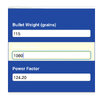357smallbore
Member
For self defense ammunition. Is there really that much difference in standard pressure loadings for the 9mm when you put the 115gr up against the 124gr?
I use 124 HST in Autumn/Winter and 115 Gold Dots for Spring/Summer.
This is out of a Shield and a Hi Power I carry these loads for.
I use 124 HST in Autumn/Winter and 115 Gold Dots for Spring/Summer.
This is out of a Shield and a Hi Power I carry these loads for.





